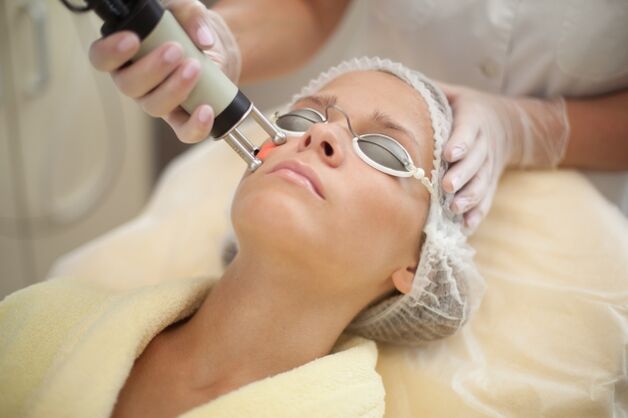Aesthetic defects in the skin and age-related changes can cause serious emotional distress. Especially when it comes to women who want to stay attractive and desirable for as long as possible. And although scientists have not been able to unravel the mystery of "eternal youth, " there is still some progress. In particular, we are talking about fractional non-ablative rejuvenation - a method of non-surgical correction that involves exposure to tissues using a laser.

Stages of non-ablative rejuvenation procedure
The technique is based on the conversion of light energy into heat. The laser beam that penetrates under the skin heats the tissues to 45-86 ° C, causing partial evaporation of fluid in a volume that stimulates natural metabolic and biochemical reactions in the cellular and extracellular matrix of the skin. In addition, the process of neocollagenesis begins in the processing zones - the formation of new collagen fibers that are responsible for the elasticity and firmness of the skin. In addition, the radiation is absorbed by the skin's chromophores and has an additional antibacterial effect by penetrating the dermis through the epidermis.
The non-ablative laser rejuvenation procedure is completely painless, performed without anesthesia and does not cause pain and discomfort. In addition, it is often found in particularly sensitive areas of the skin - around the neck, around the eyes, etc. It is used as the main method to correct age-related changes. 3-4 sessions at 2-3 day intervals are enough to achieve a visible effect. In the period between procedures, you should follow the recommendations of the expert to combine the positive results.

Indications and contraindications
Fractional non-ablative correction is defined for:
- Increased porosity, paste-like skin;
- Sunken face (the effect of "fatigue");
- Weak manifestations of hyperpigmentation or hyperkeratosis;
- The appearance of the first facial expressions, mesh, linear wrinkles;
- Loss of turgor, skin tone in exposed areas (neck, décolleté);
- Visible dilatation of subcutaneous vessels;
- Natural, healthy skin loss;
- Severe skin thirst;
- Acne and post-acne treatment.
It should be noted that despite the painlessness and safety, the procedure has a number of contraindications, the list of which includes:
- Infectious diseases of the skin;
- Manifestations of lesions in the processing areas;
- Part of chronic diseases of the nervous and cardiovascular systems;
- Mental or neurological disease;
- Photosensitivity.
During pregnancy and lactation, you should consult your doctor before the procedure.





















